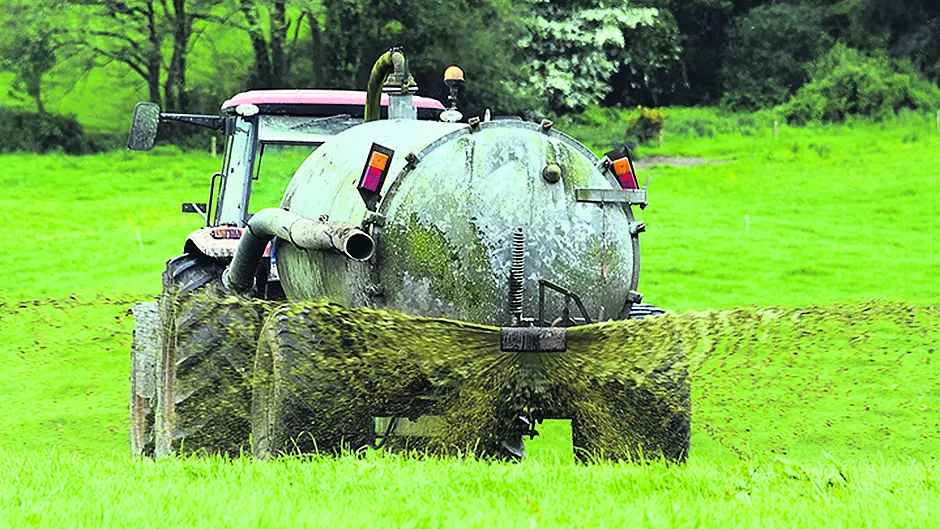The deadline for the last application of chemical fertiliser is fast approaching on September 15th. Check your fertiliser plan (or derogation plan) to work out what your allowable balance is for 2019
THE deadline for the last application of chemical fertiliser is fast approaching on September 15th. Check your fertiliser plan (or derogation plan) to work out what your allowable balance is for 2019 to ensure that you do not exceed the permitted levels for the year.
The fertiliser applied now will sustain grass growth into the autumn. What this does is provide the grass that you can use to extend the grazing season in 2019. It also contributes to the background nitrogen that supports over-winter growth and will provide grass for early grazing next spring. Soil temperatures will decrease gradually over the autumn and the response to nitrogen fertiliser will decrease accordingly.
Therefore, plan to spread the last round as early in September as possible to take advantage of superior grass growth. Slurry is a very valuable source of soil nutrients and, while the deadline for this application is the middle of October, it is better to spread slurry and empty tanks in preparation for the winter over the next month. Farmers in nitrates derogation are obliged to use the trailing shoe for slurry applications after June 15th.
This system helps to reduce the loss of nitrogen contained in the slurry to the atmosphere or to leaching. It saves you money by reducing the amount of chemical nitrogen o be applied.
Buffer zones
Much of the loss of nutrients from farmland is from what is known as overland flow. This means that slurry or chemical fertiliser applied can be carried by rainwater to the nearest stream or watercourse. This can be prevented by taking weather conditions, slope and land type into account before spreading.
Buffer zones are a major help to prevent nutrients reaching watercourses. These are strips that are left un-spread along watercourses or streams on farms. Even in the event of rain afterwards, nutrients can be trapped in the zones that were not spread.
Cross-compliance regulations stipulate that the minimum spreading buffer zones are, as follows:
• 5 metre zones from any watercourse where ground is level.
• 10 metre zone where land slopes towards the watercourse
• 20 metre zone where land borders a lake
Where farmland borders a water source for human consumption, the buffer zone should be either 25m, 100m or 200m depending on the number the water source serves.








